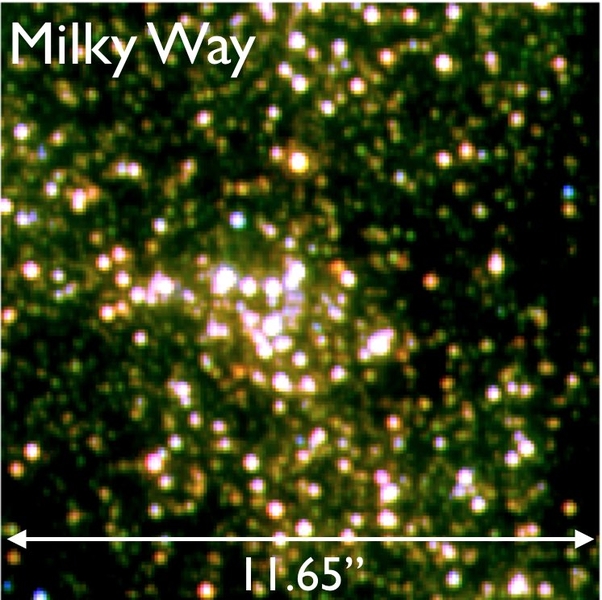The Galactic Centre: A Unique Astrophysical Laboratory
Galactic nuclei are the dense inner cores of galaxies, where stellar densities can reach values over a million times the one in the Sun´s neighbourhood. In galaxies similar to our Milky Way the nucleus is dominated by a massive black hole, with a mass between a hundred thousand to a few ten million solar masses, surrounded by a nuclear star cluster of a few hundred thousand to a few tens of million solar masses. To explore these environments adequately, we need images and spectroscopy with the highest possible angular resolution. With the currently existing biggest ground-based telescopes (8-10m primary mirrors) we can reach angular resolutions of the order 0.05”. This corresponds to a physical scale of 0.002 pc in the centre of our own Galaxy, but already to 0.2 pc in the case of the Andromeda galaxy, the nearest galaxy similar to the Milky Way. Assuming a modest surface density of one million stars per square parsec, one resolution element thus comprises roughly a few stars in the Galactic Centre (GC), but a few tens of thousands of stars in Andromeda´s nucleus. This simple back-of-the-envelope estimate demonstrates in an impressive way that the centre of the Milky Way is a unique place in the Universe where we can explore the interaction between stars, interstellar medium and a massive black hole.


The left panel shows a UVI image of the nucleus of the Andromeda Galaxy (M31) with WFPC2/Hubble Space Telescope (HST). The right panel shows a pseudo-colour near-infrared image of the nucleus of the Milky Way with WFC3/HST. Both images have exactly the same size of 11.65" on each side. This corresponds to a physical length scale of 45 pc in case of the Andromeda galaxy, but of only 0.45 pc in case of the Milky Way, where we can discern hundreds of stars.



